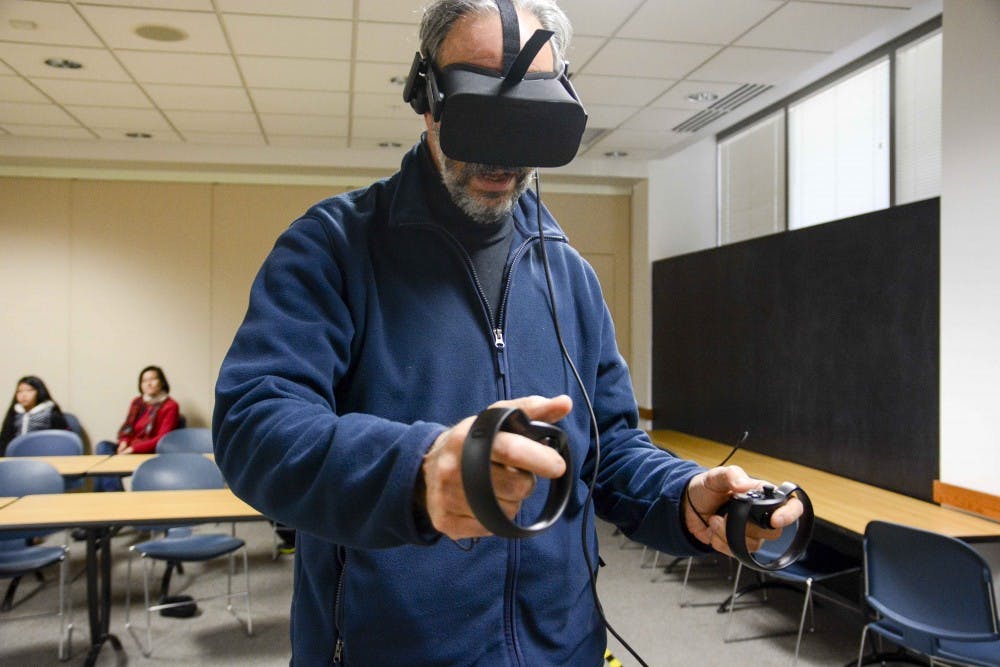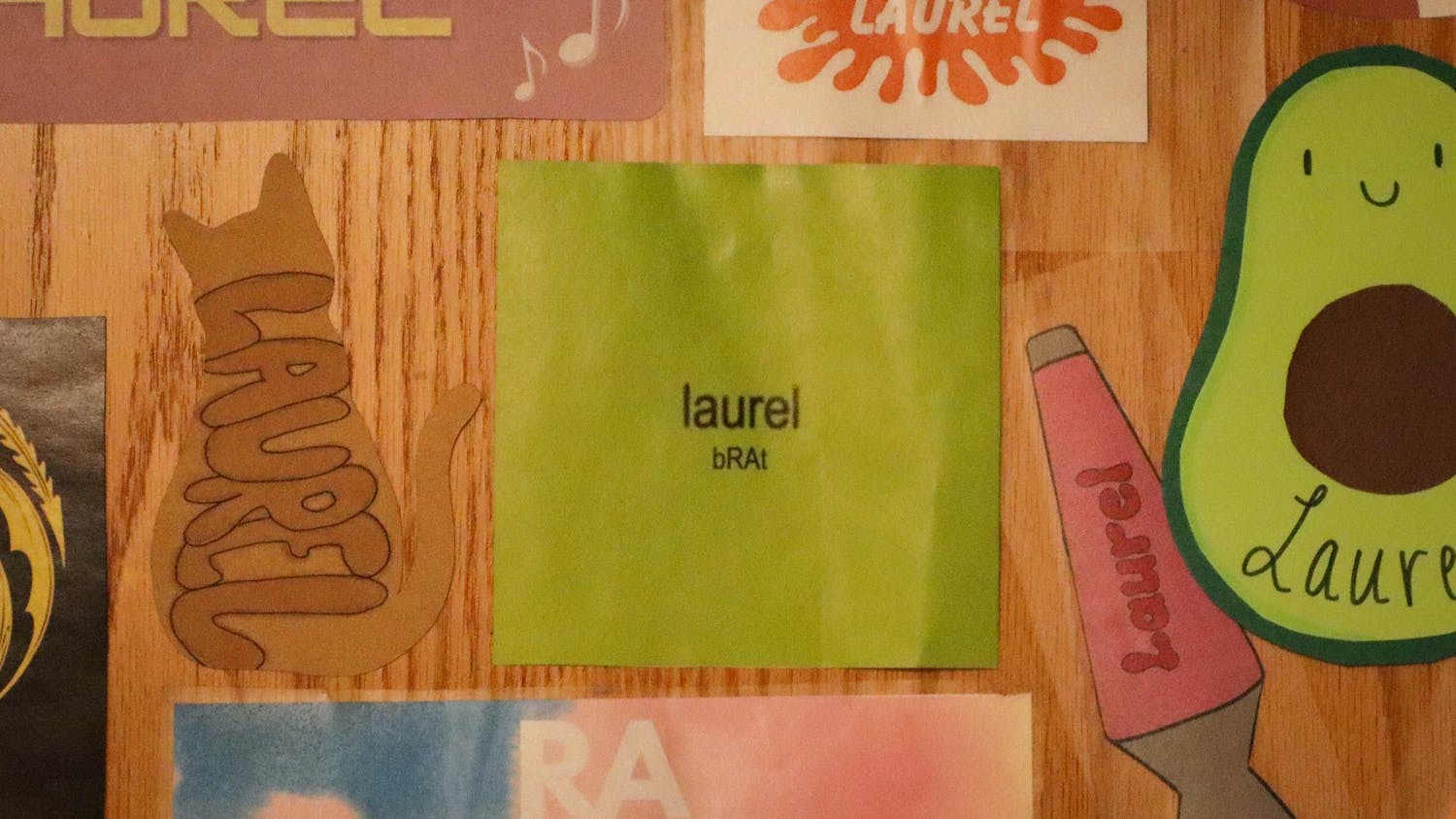As he wore an Oculus Rift headset in the Monroe County Public Library, Mark Russell experienced virtual reality for the first time with a simulation of a roller coaster. The three-dimensional space made the roller coaster’s rapid turns and drops realistic, he said, even though he was sitting in a stationary chair the whole time.
While everyone else in the room only saw the roller coaster on a small flat screen, he expressed his disorientation in short exclamations.
“What?” he said as the simulation began. “Wow.”
It felt like he was actually on the ride and was going to fall off, he said.
At Sunday’s Explore Virtual Reality event, people 12 years old and older had the opportunity to play a virtual reality game using an Oculus Rift headset, which is owned by the library. The headset gives people an immersive gaming experience that expands beyond the traditional video game confines of a flat screen.
Explore Virtual Reality is a weekly event. The second Sunday of every month is for all ages, but the event is only available to teenagers on other Sundays.
Community engagement librarian Jen Hoffman said the library has an HTC Vive virtual reality headset in addition to the Oculus Rift. Soon the library will have a headset for a PlayStation 4 that can be used in the teen section.
The library alternates between the Oculus Rift and HTC Vive at its different events because the devices track movement differently. The Oculus Rift’s tracking system works in a smaller space, while the HTC Vive works in a more room-scale virtual space.
The systems also have different controllers. The Oculus Touch is a smaller, lighter controller that picks up small movements. The HTC Vive uses a larger and bulkier controller.
At Sunday’s event, participants strapped on bulky headsets and held controllers in both hands. They moved their arms around as they interacted with the virtual, 3-D world.
Participants could use the headset for 10 minutes. They could play an action game filled with guns and robots, explore an unfamiliar setting or create three-dimensional art.
Library volunteers helped keep participants oriented by preventing them from bumping into tables and chairs as they were transported to a virtual setting.
Senior information assistant Foster Gesten showed people how to play the virtual reality games at the library event. He is still getting used to the Oculus Rift system, but he hopes the library will continue to improve participants’ virtual reality experience as the library staff becomes more familiar with the system, Gesten said.
Hoffman said she likes how virtual reality allows people to explore different environments in an immersive way, whether it is peering into valleys from a mountaintop or viewing the vastness of space.
“It’s a really out-of-body experience,” she said.
Participant Lewis Rifkowitz came to the event with his son. His son had been talking about the virtual reality experience for a while but this was the first time Rifkowitz had done it, he said.
Rifkowitz chose an art program, which allowed him to draw in the air, creating squiggly lines and scribbles in a three-dimensional space. As an artist, he appreciated the immersive drawing experience, he said.
“For me, as an artist, being in the drawing program was like working with wire sculpture,” Rifkowitz said.
Virtual reality systems like the Oculus Rift and HTC Vive are emerging technologies that few people have in their homes, due to their expensive cost, Hoffman said. For example, an Oculus Rift bundle including the headset and controls costs $798 and an HTC Vive system costs $799.99 on Amazon.
However, these events allow the public to experience virtual reality free of charge.
“Being able to share this with the public is pretty special,” Hoffman said.




